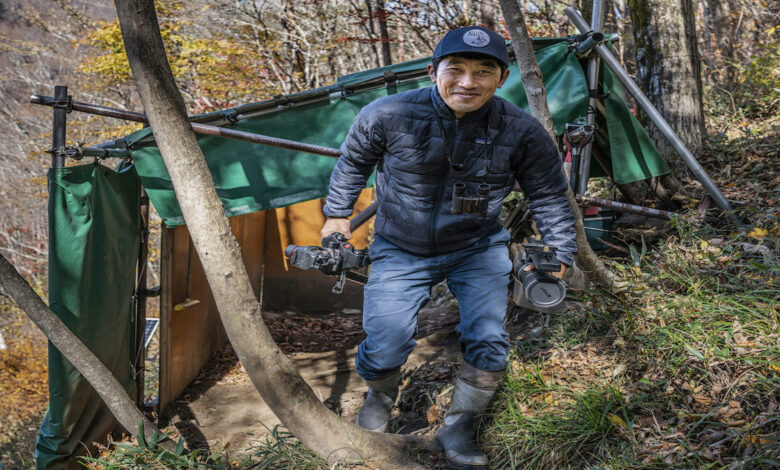
Seiichi Dejima, of The Nature Conservation Society of Japan, emerges from the blind he uses to observe a breeding pair of endangered Japanese golden eagles that live around the clearings he has cut in a plantation forest in Akaya Forest, Gunma Prefecture, Japan, to create habitat for rabbits and other prey the rare raptors eat. Photo Credit: James Whitlow Delano
Environment JapanRewilding, for the Sake of Biodiversity
In Japan, conservationists are rewilding forests in an effort to preserve and restore the nation’s native species.
“We need to increase the number of jobs like mine, connected to environmental conservation activities. If so, we can get more young people in Japan interested in the environment,” says Seiichi Dejima, activist at the Nature Conservation Society of Japan.
Between 1960 and the early 2000s, the country saw millions of acres of forest converted to conifer plantations to supply cheap lumber, threatening native biodiversity. The number of endangered species in Japan is currently estimated at 3,700, of which the only solution is habitat rewilding. As rewilding projects become more widespread, the country is seeing a return of many native species. However, these projects are not cheap, and conservationists fear that not enough people are currently invested in the country’s biodiversity. Many locals believe that young people will be key to the project’s success. In the digital age, there seems to be a lack of passion amongst the youth regarding environmentalism in Japan. Educating the young and sparking interest in ecology is proving to be a huge part of the challenge. “If social interest is high, politics will move,” concludes Shouta Teraya of the Natural Environment Section of Shari Town, Japan.



